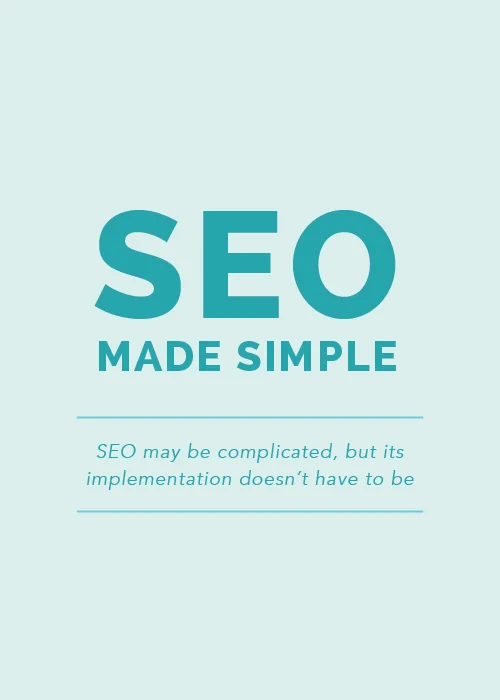This summer, my husband and I were driving to the beach late at night, in the middle of nowhere, when the gas light came on. Desperate for a gas station, we cried out to Siri for help.
She led us to the only gas station within a 15-minute radius, and it was like something off of a horror film: the convenience store windows were pitch black, a stray cat was eating something in the parking lot and there were no cars in sight. I'm pretty sure I saw Hannibal Lecter at one point. After expressing my concern to Jake, he reassured me that it was going to be okay, but I didn't catch my breath again until we left five minutes later.
First impressions are crucial.
If we hadn't been desperate, I wouldn't have gone anywhere near that gas station; a well-lit Sheetz with fresh coffee, clean bathrooms, and a full parking lot would have been more up my alley.
The same is true on the Internet.
At some point we've all stumbled upon a page and scrambled to x-out for fear that our computer was going to be infected with a nasty virus.
A few months ago I came across an interesting study that sought to answer a simple question: How much impact does design have on trust and mistrust of websites and how much impact does the quality of the content have?
The results were eye-opening: 94% of the participants cited design-related issues for doubting the reliability of a website. Only 6% cited content-related issues as the source for a lack of trust in a site.
This is confirmation for something most of us already know: design plays a large role in the credibility of your website. To help you create a more trustworthy experience for your visitors, today I'm sharing 7 tips for designing a credible website that you can implement today.
1 | Simplify the layout
We've all heard the saying "less is more." While it's tempting to add a lot of fun features to your website, it can often be distracting and overwhelming for your visitors. Instead of going overboard with the bells and whistles, aim to keep the layout simple.
2 | Organize the navigation
There's nothing worse than landing on a website and being unable to find what you're looking for. Spend time creating a site map to make your navigation straightforward and intuitive. Too many items in your navigation bar can be confusing, so consider tucking pages into folders or moving some pages down to a footer navigation or a blog sidebar. I recommend having no more than 6 main items in your navigation bar at once.
It's always a good idea to do some user testing before publishing changes to your navigation, too. Recruit the help of a friend or family member and give them tasks to complete on your website (purchasing an item, finding a blog post, submitting a contact form, etc.). Look over their shoulder and take notes on how easily they are able to find what they're looking for. This always provides helpful information on how you can make beneficial changes to your navigation.
3 | Add visual interest
Simple doesn't have to be boring. Add some character to your website through fonts, colors, and images.
4 | Avoid pop-up advertisements
There are many opposing views on this, but according to the study I mentioned above, pop-up ads can often lead to visitor skepticism and mistrust. Don't give your readers another reason to x-out of your site; keep your ads in your blog sidebar or find clever ways to advertise through content marketing.
5 | Cut down on loading times
Slow introductions to a site are another pet-peeve of many website visitors. Cut back on loading times by omitting flash introductions, splash pages, and large file sizes for images.
6 | Avoid too much Small text
Too much small text on a page can be overwhelming. Avoid this by increasing your font size, breaking up your text into paragraphs, and using headers to distinguish groups of information.
7 | Create search facilities and indexes
Allow visitors to easily find what they're looking for on your site by adding a search bar to a prominent location. If you have a blog, it's helpful to categorize your posts and create an index in your sidebar so that readers can refer back to past articles.
No one wants their website to be the Hannibal Lecter of the Internet. Build trust with your audience by investing in a well-designed, trustworthy website.
Does the thought of refining your website seem daunting to you? I'm happy to help. Whether it's by taking the burden away completely and designing your website for you or just talking to you for an hour or so about improvements you can make on your own, I would love to help you create trust and credibility within your "home on the internet." If you're interested, visit my branding and contact pages and shoot me a message!
For a look at the study I mentioned above, click here, here and here.





